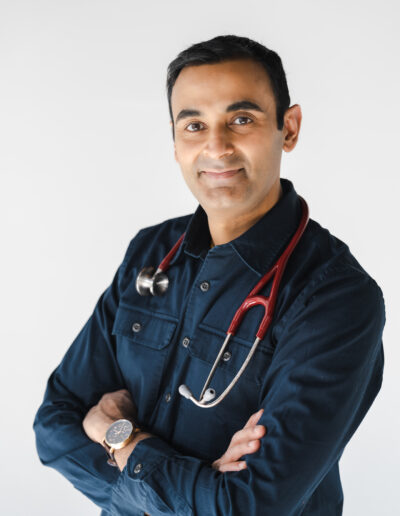The term “old school” in many facets of life has negative connotations. We live in a modern, technologically advanced and fast-paced world—and there’s no room for certain people who appear to hold us back.
A few years ago, I wrote an article about an experience I had with an “old school” physician. That experience really caused me to reflect on the situation the medical profession finds itself in, and how much of the doctor-patient relationship we’ve lost over the last couple of decades.
Every doctor, patient, and family yearns for more direct and individualized care. The ironic thing here is that many of the administrative and technological requirements that have pulled doctors (and nurses for that matter) away from their patients, have been enforced by regulators and administrators who themselves would love an “old school” physician for them and their families. So where did it all go wrong? We can save that debate for another time, but let’s focus on those universal traits that all patients and families seem to desire:
1. The doctor who sits down with them
The old school physician pulls up a chair (when in a hospital), sits face-to-face with their patient, maintains eye contact and asks open-ended questions. They allow the patient and family a chance to speak, directing them when necessary towards the questions. Just good old-fashioned talking. At the end of the encounter, they are given a chance to ask any questions. The doctor isn’t distracted by a computer, tablet or smartphone. Writing down notes on a piece of paper if necessary looks far more attentive to the patient.
2. A doctor who is not rushed
In the healthcare system we work in, this is a tough one. There are certain techniques that can be utilized to make the most out of our ever-shrinking time slots. But the second the doctor gives the palpable impression that they are in a hurry to move on, this is something that’s remembered as the “doctor being in a real rush”.
3. The doctor thinks carefully through the problem
The old school physician is the one who would visibly be a thoughtful problem solver. They would think thoroughly through the problem at hand and utilize their breadth of knowledge to come up with a diagnosis, and then take the time to explain it to you.
4. The doctor has solid clinical skills
Physical examination (along with history taking) has become a lost art. It’s now too much of a quick protocol driven, box-ticking exercise. And this is something that is noticed by our patients too. The old-school physician has the diagnosis in mind right after talking to and examining their patient. Before ordering a battery of tests or having a shotgun-type approach to investigations.
5. The doctor knows you
This is perhaps one of the biggest changes over the last few decades. Your old family physician would know you (and likely your family) very well. They didn’t rely on computers (more about that below). You felt a personal connection to them and knew they were rooting for you. Nowadays, little things we can do include reading and recapping on the medical chart before we walk into that room to make sure we know as much as possible about the human being in front of us.
6. The doctor was free and independent
This may be more difficult to recreate with the way the healthcare system is going, but back in the day doctors were their own boss and not at the whim of healthcare administrators and overly burdensome regulation. Back then, it was more about the doctor and the patient in its purest form, as it should be. There wasn’t a small army of a dozen administrators for every physician! Likewise, this was reflected in how their doctor acted and behaved, free to be the true advocate for their patient.
7. The doctor wasn’t glued to their computer screen
I’m saving this for last, because healthcare information technology and cumbersome Electronic Medical Records—in their current suboptimal state—now represent one of the biggest barriers between the doctor and patient. With studies now suggesting that doctors (and nurses) spend an absolute minimal part of their day, as little as 10 percent, in direct patient care—everyone at the frontlines, but most of all our patients, lose out. As does productivity. Until better and faster IT solutions are created, the world of healthcare IT has reduced patients’ stories to reams of garbled data, tick boxes and random incomprehensible lists. Whatever physicians and nurses can do to push for less time with their screen, and more with patients, will benefit everyone. The old-school physician wasn’t bogged down by information technology, yet still delivered excellent competent care to their happy patients.
The above are just 7 ways in which the old-school physician operated. All parties involved would be happier if we pushed for modern doctors to keep these traits. Yes, even administrators. Do you know why? Because as well as it just being good medical care, imagine the healthcare cost savings that would result if doctors and nurses are able to go back to actually focusing more on our patients. Reduced need for repetitive unnecessary testing, higher patient satisfaction, shorter lengths of stay, keeping people at home instead of in the hospital, and also higher productivity and efficiency.
Old-school is good. For this debate at least, the answer lies in looking backwards and regaining the lost art of good medicine.
 Suneel Dhand is a physician, writer, and YouTuber. He is Founder at MedStoic Lifestyle Medicine and DocsDox . Follow him on YouTube and Facebook.
Suneel Dhand is a physician, writer, and YouTuber. He is Founder at MedStoic Lifestyle Medicine and DocsDox . Follow him on YouTube and Facebook.

